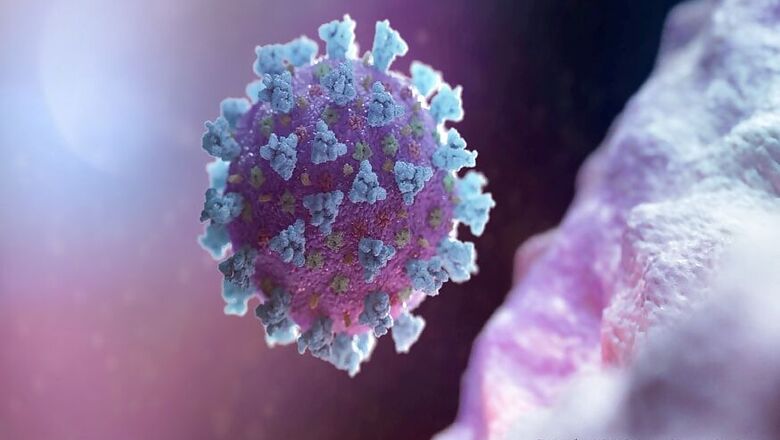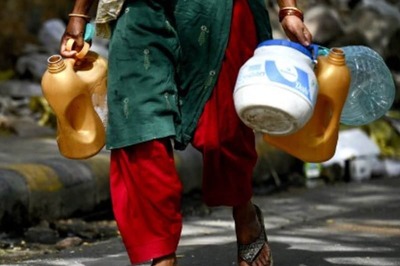
views
Scientists have predicted a surge in HIV, tuberculosis, and malaria deaths in low- and middle-income countries due to the COVID-19 pandemic, but add that this toll can be reduced by prioritising the most critical services, such as timely diagnosis and treatment for these diseases.
According to the modelling study, published in the journal The Lancet Global Health, low- and middle-income countries (LMICs) could see HIV, tuberculosis (TB), and malaria deaths increase by as much as 10, 20, and 36 per cents respectively over the next five years due to the disruption of health services caused by the pandemic.
However, the researchers, including those from Imperial College London in the UK, said maintaining core services for HIV, TB, and malaria could largely mitigate the broader health impact of the COVID-19 pandemic.
They explained that these services specifically include maintaining access to antiretroviral therapy (ART) for HIV, timely TB diagnosis and treatment, and early resumption of the distribution of long-lasting insecticide-treated nets (LLINs) for preventing mosquito-borne malaria spread.
The scientists also cautioned that their study aimed to quantify the potential scale of the impact of COVID-19, and to guide how it could be minimised, rather than provide precise estimates.
"The COVID-19 pandemic and actions taken in response to it could undo the some of the advances made against major diseases such as HIV, TB, and malaria over the past two decades, compounding the burden caused by the pandemic directly," said study co-author Timothy Hallett from Imperial College London.
"In countries with a high malaria burden and large HIV and TB epidemics, even short-term disruptions could have devastating consequences for the millions of people who depend on programmes to control and treat these diseases," Hallett said.
However, he added that the knock-on impact of the pandemic could be largely avoided by maintaining core services and continuing preventative measures.
Based on the results, the researchers said well managed, long-term suppression measures could avert the most COVID-19 deaths.
But if these interventions are not well managed, they could cause people to stay away from hospitals and clinics and force public health programmes to be cancelled, leading to a large spike in deaths from other major infectious diseases that had been coming under control, the scientists explained.
In the research, Hallett and his team assumed a basic reproductive number R0 -- which is the average number of people each individual with the coronavirus is likely to infect -- as 3 to develop four different policy response scenarios to the pandemic.
These, according to the scientists, are 'no action', 'mitigation' -- which represents a 45 per cent reduction in R0 for 6 months using interventions such as physical distancing-- 'suppression-lift' with a 75 per cent reduction in R0 for 2 months, or 'suppression' which is a 75 per cent reduction in R0 for 1 year.
Then using models simulating the spread of HIV, TB, and malaria they estimated the additional impact on health that could be caused in different settings, either by COVID-19 interventions limiting routine programme activities, or due to pandemic overburdening the health system.
The findings, according to the researchers, suggest that the impact of the pandemic varies according to the extent to which interventions against COVID-19 cause long disruptions to activities.
They said it also depends on how successfully those measures reduce transmission of SARS-CoV-2, and avoid the health system being overwhelmed.
In the case of HIV, the scientists said the greatest impact of the COVID-19 pandemic is likely from interruption to the supply and administering of ART, which may occur during times of high health system demand.
In the worst case scenario, assuming no action or suppression-lift, they said countries with high rates of HIV typical in parts of southern Africa may see up to 10 per cent more deaths due to HIV over the next 5 years than would occur without COVID disruptions.
According to the study, this is equivalent to 612 additional HIV deaths per million population in 2020-2024.
The researchers suggested that offering individuals receiving ART multi-month prescriptions or home delivery could ensure they can access treatment even in periods of highest health system demand.
For TB, they said the greatest impact could be from reductions in timely diagnosis and treatment of new cases.
Based on the model, the scientists said in southern African countries, TB deaths could rise by as much as 20 per cent over the next 5 years compared with when services are functioning normally.
For malaria, the model predicted that in the worst case the COVID-19 pandemic may disrupt planned LLIN distribution, leading to malaria deaths increasing by 36 per cent over the next 5 years.
According to the scientists, this is equivalent to 474 additional malaria deaths per million population in 2020-2024.
"Routine preventative measures must be prioritised, ensuring mosquito net distribution campaigns and prophylactic treatments, such as mass drug distribution and seasonal malaria chemoprevention, are maintained," said Alexandra Hogan from Imperial College London, a co-author of the study.


















Comments
0 comment